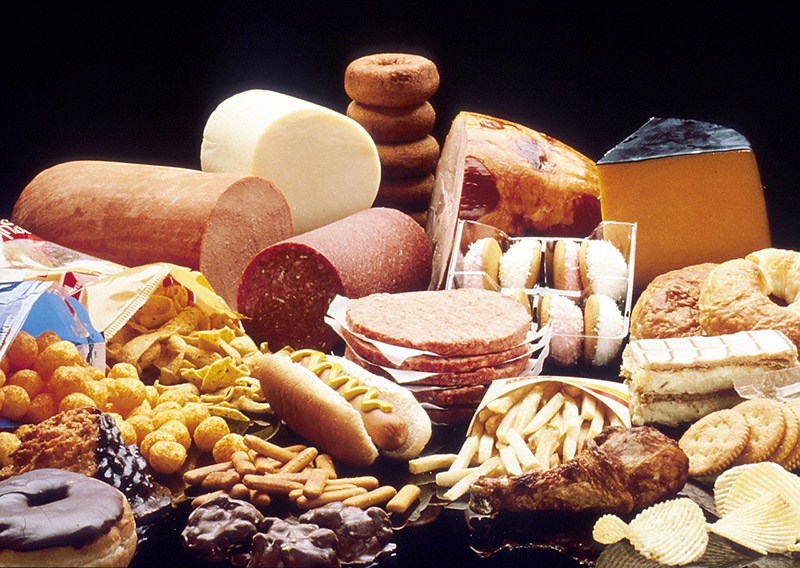What is High Cholesterol?
High cholesterol, also known as hypercholesterolemia, refers to an elevated cholesterol level in the blood. Cholesterol is a waxy, fat-like substance produced by the liver and obtained through certain foods. It is essential to cell membranes, hormone production, and bile acid synthesis.
Cholesterol travels through the bloodstream in particles called lipoproteins. There are two main types of lipoproteins involved in cholesterol transport:
Low-density lipoprotein (LDL)
Often called "bad" cholesterol, LDL carries cholesterol from the liver to cells throughout the body. Suppose there is an excess of LDL, or it is not efficiently removed from the bloodstream. In that case, it can accumulate in the arterial walls, forming plaques and contributing to atherosclerosis (hardening and narrowing of the arteries). This can increase the risk of cardiovascular diseases such as heart attack and stroke.
High-density lipoprotein (HDL)
Commonly known as "good" cholesterol, HDL helps remove excess cholesterol from the bloodstream and carries it back to the liver for disposal. Higher levels of HDL are associated with a lower risk of cardiovascular disease.
When the balance between LDL and HDL is disrupted and LDL levels are elevated, it can lead to the development of atherosclerosis and increase the risk of cardiovascular problems. Other factors contributing to high cholesterol levels include a diet high in saturated and trans fats, obesity, lack of physical activity, smoking, diabetes, and certain genetic conditions.
High cholesterol does not cause specific symptoms, often called a silent condition. It is usually detected through a blood test known as a lipid profile, which measures total cholesterol, LDL cholesterol, HDL cholesterol, and triglycerides (another type of fat in the blood).
Lifestyle modifications are often the first step in managing high cholesterol. This includes adopting a healthy diet low in saturated and trans fats, engaging in regular physical activity, achieving and maintaining a healthy weight, and avoiding tobacco smoke. In some cases, medication, such as statins, may be prescribed to lower cholesterol levels, mainly when lifestyle changes alone are insufficient.
Regular monitoring, adhering to the recommended treatment plan, and managing other risk factors are important in controlling high cholesterol and reducing the risk of cardiovascular complications. It is advised to consult a healthcare professional for proper diagnosis, guidance, and personalised treatment options based on individual health factors.
How Many Australian Men Have High Cholesterol?
It is difficult to quantify how many Australian men suffer from high cholesterol; however, here is some general information.
High cholesterol is a common health concern worldwide, including in Australia. According to the Australian Bureau of Statistics (ABS) National Health Survey 2017-2018, approximately 5.6 million Australian adults aged 18 years and over (38% of the population) had high total cholesterol levels, a total cholesterol level of 5.5 mmol/L or higher. This includes both men and women.
The prevalence of high cholesterol tends to increase with age, and it can be influenced by various factors such as lifestyle, diet, genetics, and underlying health conditions. Men, in general, tend to have a higher risk of developing high cholesterol than premenopausal women, but the danger becomes more similar after menopause.
To obtain the most up-to-date and accurate information regarding the prevalence of high cholesterol in Australian men, I recommend referring to recent reports or studies from reputable sources such as the Australian Institute of Health and Welfare (AIHW) or the Australian Heart Foundation. These organisations regularly update cardiovascular health and related risk factors in Australia.
What Are The Symptoms of High Cholesterol?
High cholesterol itself does not typically cause noticeable symptoms. It is often called a silent condition because it doesn't usually present specific signs or symptoms. This is why it's essential to have regular cholesterol checks as part of routine health screenings.
While high cholesterol doesn't have direct symptoms, it can contribute to developing other health conditions, particularly cardiovascular diseases. If cholesterol levels are elevated for a prolonged period, it can lead to the formation of plaque in the arteries, a condition called atherosclerosis. This buildup of plaque can narrow the arteries and reduce blood flow to vital organs, increasing the risk of various complications, including:
Angina
Reduced blood flow to the heart can cause chest pain or discomfort, known as angina. This may be experienced as a squeezing or pressure sensation in the chest that may radiate to the arms, shoulders, jaw, or back.
Heart Attack
A complete blockage of blood flow to the heart can result in a heart attack. Symptoms may include severe chest pain or pressure, shortness of breath, nausea, lightheadedness, and pain or discomfort in the arms, neck, jaw, or back.
Stroke
If a blood clot or plaque buildup interrupts blood flow to the brain, it can cause a stroke. Symptoms may include sudden numbness or weakness in the face, arm, or leg (usually on one side of the body), difficulty speaking or understanding speech, vision problems, severe headaches, and loss of balance or coordination.
It's important to note that these symptoms are not exclusive to high cholesterol or atherosclerosis. They can be caused by various other conditions as well. It's recommended to consult with a healthcare professional for proper diagnosis and assessment if any of these symptoms are experienced.
How Do I Know If I Have High Cholesterol?
A healthcare professional can perform a blood test called a lipid profile or lipid panel to determine if you have high cholesterol. This test measures several components related to cholesterol levels, including:
Total cholesterol
It measures the total amount of cholesterol in your blood, including LDL (bad) cholesterol and HDL (good) cholesterol.
LDL cholesterol
This is considered the "bad" cholesterol because high LDL cholesterol levels can contribute to plaque buildup in the arteries.
HDL cholesterol
This is considered the "good" cholesterol because higher HDL cholesterol levels are associated with a lower risk of cardiovascular diseases.
Triglycerides
Triglycerides are a type of fat in the blood. High triglyceride levels can also contribute to cardiovascular health risks.
A lipid profile is typically performed after fasting, usually overnight, to obtain accurate results. Your healthcare provider may also consider other factors, such as your age, gender, family history, medical history, and lifestyle habits, in assessing your risk for high cholesterol.
If you suspect that you might have high cholesterol or if you have other risk factors for cardiovascular disease, it is advisable to consult a healthcare professional. They can evaluate your symptoms, perform the necessary tests, and diagnose you correctly. Regular cholesterol screenings are also recommended for routine health check-ups, especially for individuals with known risk factors or a family history of high cholesterol or heart disease.
Remember that high cholesterol typically does not cause noticeable symptoms, so a blood test is the most reliable way to determine your cholesterol levels. Based on the results, your healthcare provider can guide managing your cholesterol levels through lifestyle changes, medication (if necessary), and other interventions to reduce your risk of cardiovascular complications.
What Can I Do to Reduce My Cholesterol Levels?
To reduce cholesterol levels, there are several lifestyle modifications you can make. Healthy habits can help lower LDL (bad) cholesterol, increase HDL (good) cholesterol, and improve cardiovascular health. Here are some strategies:
Eat a heart-healthy diet:
- Choose healthy fats
Limit saturated and trans fats in red meat, full-fat dairy products, fried foods, and processed snacks. Instead, opt for healthier fats like monounsaturated fats (olive oil, avocados, and nuts) and polyunsaturated fats (fatty fish, seeds, and vegetable oils). - Increase fibre intake
Include plenty of soluble fibre in your diet, which can help lower cholesterol levels. Good sources of soluble fibre include oats, legumes, fruits, vegetables, and whole grains. - Consume omega-3 fatty acids
Incorporate foods rich in omega-3 fatty acids, such as fatty fish (salmon, mackerel, trout), flaxseeds, chia seeds, and walnuts. Omega-3 fatty acids can help lower LDL cholesterol. - Eat more plant sterols
Certain foods fortified with plant sterols or stanols, such as some margarine, can help lower LDL cholesterol levels.

Maintain a healthy weight
Losing excess weight can help reduce LDL cholesterol and improve HDL cholesterol levels. Aim for a healthy body weight by combining regular physical activity with a balanced diet.
Engage in regular physical activity
Regular exercise, such as brisk walking, cycling, swimming, or aerobic activities, can raise HDL cholesterol and lower LDL cholesterol. Aim for at least 150 minutes of moderate-intensity aerobic exercise per week or 75 minutes of vigorous-intensity activity.

Quit smoking
Smoking can lower HDL cholesterol and damage blood vessels, increasing the risk of heart disease. Quitting smoking can have significant positive effects on cholesterol levels and overall health.
Limit alcohol consumption
Excessive alcohol intake can raise cholesterol levels and increase the risk of heart disease. If you choose to drink alcohol, do so in moderation—up to one drink per day for women and up to two drinks per day for men.
Manage stress
Chronic stress can affect cholesterol levels indirectly through unhealthy coping mechanisms such as overeating, alcohol consumption, or smoking. Find healthy ways to manage stress, such as exercise, relaxation techniques, or hobbies.
Follow prescribed medications (if necessary)
Sometimes, lifestyle changes alone may not be enough to lower cholesterol levels. Your healthcare provider may prescribe medication, such as statins or other cholesterol-lowering drugs, to help manage your cholesterol levels effectively. Taking prescribed medications as directed and attending regular follow-up appointments is essential.
Working with your healthcare provider to develop a personalised plan that suits your needs and medical history is crucial. They can provide guidance, monitor your progress, and adjust treatment as necessary to help you reach and maintain healthy cholesterol levels.

